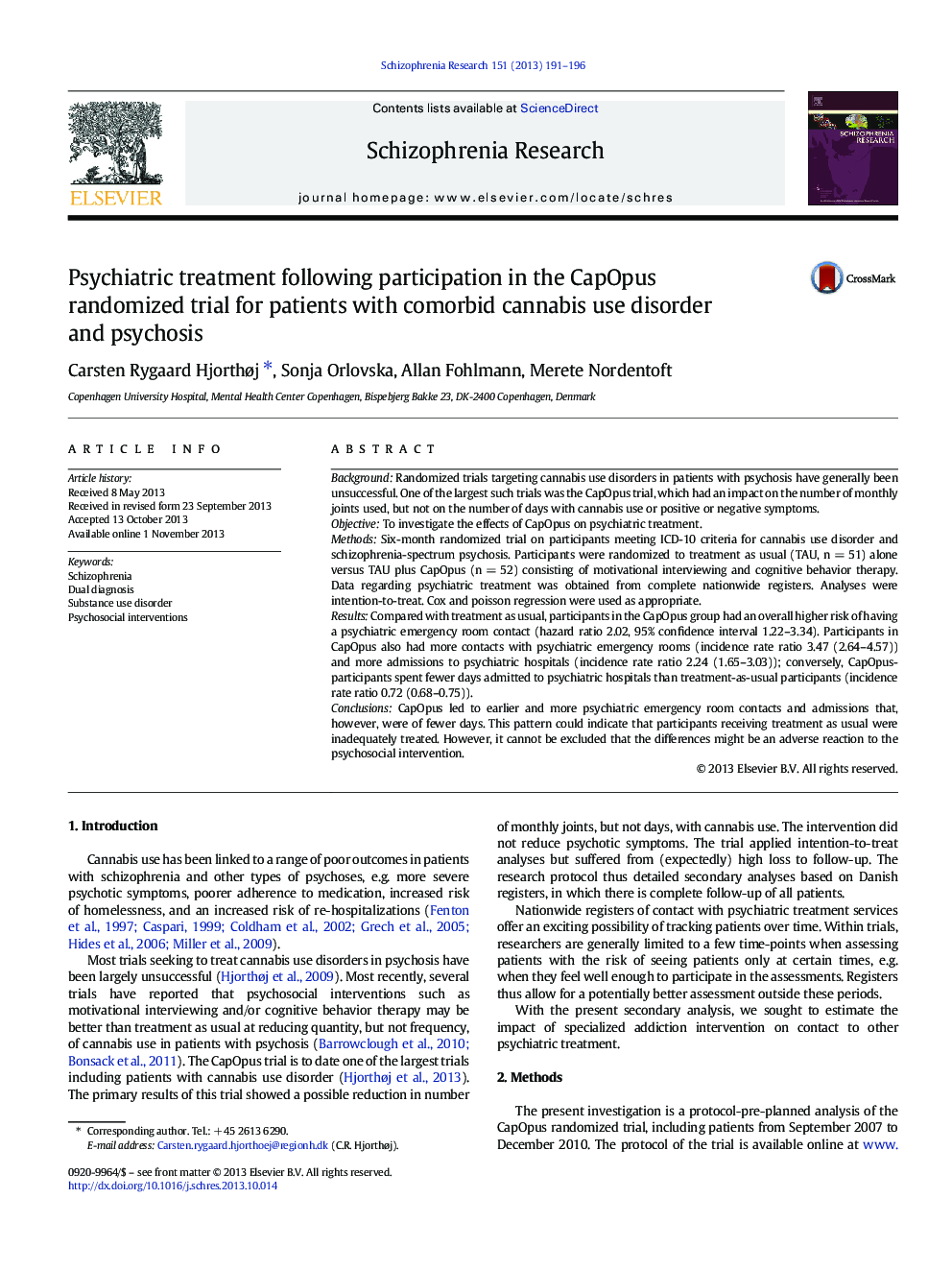| کد مقاله | کد نشریه | سال انتشار | مقاله انگلیسی | نسخه تمام متن |
|---|---|---|---|---|
| 341201 | 548476 | 2013 | 6 صفحه PDF | دانلود رایگان |

BackgroundRandomized trials targeting cannabis use disorders in patients with psychosis have generally been unsuccessful. One of the largest such trials was the CapOpus trial, which had an impact on the number of monthly joints used, but not on the number of days with cannabis use or positive or negative symptoms.ObjectiveTo investigate the effects of CapOpus on psychiatric treatment.MethodsSix-month randomized trial on participants meeting ICD-10 criteria for cannabis use disorder and schizophrenia-spectrum psychosis. Participants were randomized to treatment as usual (TAU, n = 51) alone versus TAU plus CapOpus (n = 52) consisting of motivational interviewing and cognitive behavior therapy. Data regarding psychiatric treatment was obtained from complete nationwide registers. Analyses were intention-to-treat. Cox and poisson regression were used as appropriate.ResultsCompared with treatment as usual, participants in the CapOpus group had an overall higher risk of having a psychiatric emergency room contact (hazard ratio 2.02, 95% confidence interval 1.22–3.34). Participants in CapOpus also had more contacts with psychiatric emergency rooms (incidence rate ratio 3.47 (2.64–4.57)) and more admissions to psychiatric hospitals (incidence rate ratio 2.24 (1.65–3.03)); conversely, CapOpus-participants spent fewer days admitted to psychiatric hospitals than treatment-as-usual participants (incidence rate ratio 0.72 (0.68–0.75)).ConclusionsCapOpus led to earlier and more psychiatric emergency room contacts and admissions that, however, were of fewer days. This pattern could indicate that participants receiving treatment as usual were inadequately treated. However, it cannot be excluded that the differences might be an adverse reaction to the psychosocial intervention.
Journal: Schizophrenia Research - Volume 151, Issues 1–3, December 2013, Pages 191–196